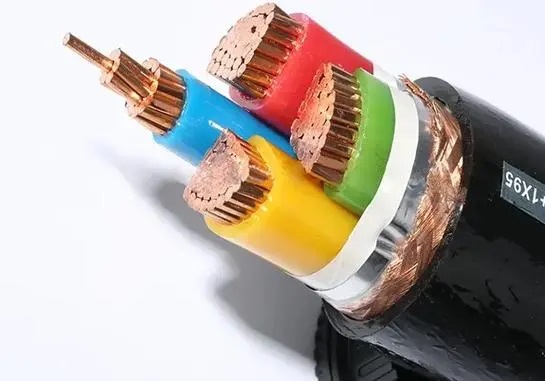Introduction
Shielded cables play a crucial role in ensuring the safety and reliability of electrical systems in hazardous environments. These environments, such as chemical plants, oil refineries, and industrial facilities, present unique challenges due to the presence of potentially explosive gases, flammable liquids, and other hazardous materials. In such environments, the risk of electrical hazards, such as short circuits, electrical interference, and electromagnetic interference, is significantly heightened. Shielded cables are designed to mitigate these risks by providing an extra layer of protection against electrical interference and ensuring the safe and reliable operation of electrical systems. In this article, we will explore the importance of shielded cables in hazardous environments, their key features and benefits, as well as best practices for their installation and maintenance.
Importance of Shielded Cable in Hazardous Environments
In hazardous environments, the risk of electrical hazards is a constant concern. Electrical equipment and systems must be designed and installed in a way that minimizes the risk of ignition and explosion. Shielded cables are an essential component of this risk mitigation strategy. By providing a layer of insulation and protection around the conductors, shielded cables help prevent electrical faults and short circuits that could lead to catastrophic incidents in hazardous environments.
One of the primary reasons why shielded cables are so important in hazardous environments is their ability to reduce electromagnetic interference (EMI) and radio frequency interference (RFI). These types of interference can disrupt the operation of electrical equipment and lead to malfunctions or failures. In environments where the reliable operation of electrical systems is critical, such as chemical plants or oil refineries, the presence of EMI and RFI can pose a significant risk to safety and productivity. Shielded cables help mitigate these risks by providing a barrier against external electromagnetic fields and ensuring the integrity of the signal transmission.
Furthermore, shielded cables also offer protection against electrical noise and signal degradation, which can occur in high-voltage or high-current applications. The shielding provided by these cables helps to maintain signal integrity and prevent data loss or corruption, ensuring the accurate and reliable transmission of electrical signals in hazardous environments.
overhead power line weather protection and Benefits of Shielded Cables
Shielded cables are designed with specific features that make them well-suited for use in hazardous environments. Some of the key features and benefits of shielded cables include:
1. Electromagnetic Interference (EMI) Shielding: Shielded cables are constructed with a metallic shield, such as aluminum foil or copper braid, that provides protection against EMI and RFI. This shielding helps to minimize the impact of external electromagnetic fields on the electrical signals transmitted through the cable, ensuring reliable operation in challenging environments.
2. Signal Integrity: Shielded cables help maintain the integrity of electrical signals by reducing noise and interference that can degrade the signal quality. This is particularly important in high-frequency applications or environments where signal accuracy is critical.
3. Safety and Reliability: Shielded cables enhance the safety and reliability of electrical systems by reducing the risk of electrical faults, short circuits, and other hazards. The shielding provided by these cables helps to prevent accidental contact with live conductors, minimizing the risk of electrical shock or fire.

4. Durability: Shielded cables are designed to withstand harsh environmental conditions, such as extreme temperatures, moisture, and chemical exposure. This durability ensures the long-term performance and reliability of the cables in hazardous environments.
5. Compliance with Standards: Shielded cables are often manufactured in accordance with industry standards and regulations, such as the National Electrical Code (NEC) and the International Electrotechnical Commission (IEC) standards. This ensures that the cables meet the requirements for safety and performance in hazardous environments.
Best Practices for Installation and Maintenance of Shielded Cables
Proper installation and maintenance of shielded cables are essential to ensure their effectiveness and longevity in hazardous environments. Here are some best practices to consider when installing and maintaining shielded cables:
1. Proper Grounding: Shielded cables must be properly grounded to ensure the effectiveness of the shielding. The shield should be connected to a ground point using a dedicated grounding conductor to provide a low-impedance path for stray currents and ensure the integrity of the shield.
2. Avoid Overlapping: When installing shielded cables, care should be taken to avoid overlapping the shields of adjacent cables. Overlapping shields can create unwanted coupling effects and compromise the effectiveness of the shielding. It is recommended to maintain a minimum distance between the shields of adjacent cables to minimize interference.
3. Use Cable Tray or Conduit: Shielded cables should be installed in cable trays or conduits to provide physical protection and prevent damage from external factors, such as moisture, chemicals, or mechanical stress. Proper cable management practices should be followed to ensure the cables are securely fixed and supported.
4. Perform Regular Inspections: Regular inspections of shielded cables should be conducted to check for signs of wear, damage, or degradation. Any issues identified during inspections should be addressed promptly to prevent potential failures or safety hazards. It is important to follow the manufacturer's guidelines for maintenance and inspection of shielded cables.
5. Consult with Experts: When in doubt about the installation or maintenance of shielded cables, it is advisable to consult with electrical engineers or experts in the field. They can provide guidance and recommendations based on their knowledge and experience, ensuring the safe and proper operation of shielded cables in hazardous environments.
Conclusion
Shielded cables are a critical component of electrical systems in hazardous environments, providing protection against electromagnetic interference, signal degradation, and other electrical hazards. By understanding the importance of shielded cables, their key features and benefits, and best practices for their installation and maintenance, organizations can ensure the safety and reliability of their electrical systems in challenging conditions. Investing in high-quality shielded cables and following best practices for their installation and maintenance can help mitigate risks, enhance performance, and ensure compliance with safety standards in hazardous environments.
